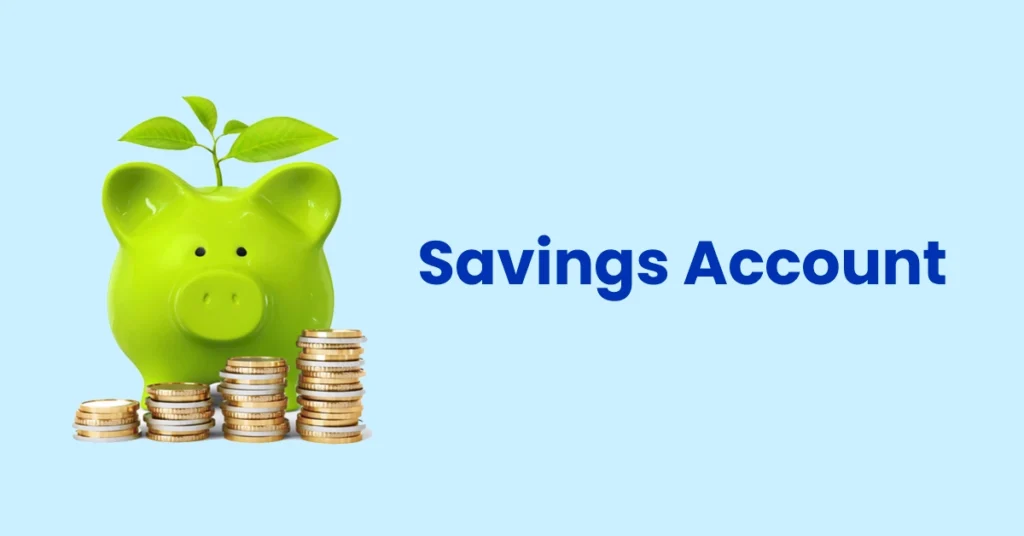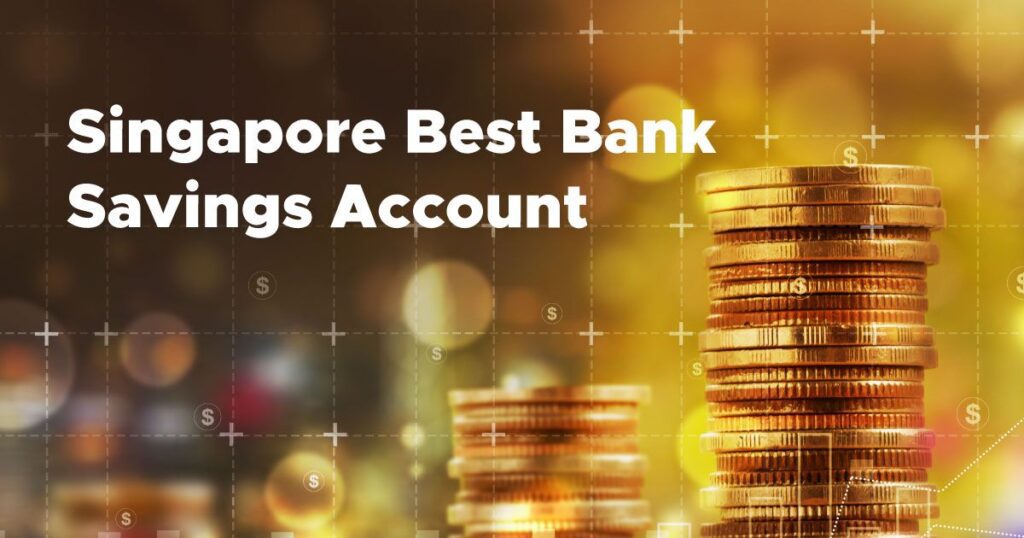The best high-yield savings account rate is 5.00% APY, available from Varo Bank, AdelFi, and Fitness Bank. That’s more than 13 times the FDIC’s national average for savings accounts of 0.38% APY.1 A high-yield savings account is great because it pays more interest, while still giving you the flexibility to withdraw your money when needed. Every business day, we publish a ranking based on the highest savings account APYs available that day from nationally available institutions. All savings accounts and rates in our rankings were collected, verified, and available to open as of July 2, 2025.
In the News
The Federal Reserve held rates steady at its June 18 meeting, as it had at its previous three meetings. Three rate cuts late last year lowered the federal funds rate by a full percentage point to a range of 4.25%–4.50%, its lowest range since February 2023. Quarterly economic projections also released on June 18 indicate that two additional quarter-point rate cuts could come later this year. Savings rates closely follow the fed funds rate, which means savings rates are expected to come down if the Fed lowers rates.234 That makes this a great time to lock in a high rate on a savings account.
Below, you’ll find our partners’ savings and cash management accounts—from banks, credit unions, and other financial institutions that use partner banks—followed by our top 15 ranking of the best savings account rates available nationwide.
Best High-Yield Savings Account Rates for July 2025
- Varo Bank – 5.00% APY
- AdelFi – 5.00% APY
- Fitness Bank – 5.00% APY
- Axos Bank – 4.66% APY
- Pibank – 4.60% APY
- Vibrant Credit Union – 4.50% APY
- Presidential Bank – 4.50% APY
- TotalBank – 4.41% APY
- Zynlo Bank – 4.40% APY
- LendingClub – 4.40% APY
- Newtek Bank – 4.35% APY
- Primis Bank – 4.35% APY
- CFG Bank – 4.32% APY
- Vio Bank – 4.31% APY
- EverBank – 4.30% APY
- Bread Savings – 4.30% APY
- My Banking Direct – 4.30% APY
- Openbank – 4.30% APY
- Valley Direct – 4.30% APY
- BrioDirect – 4.30% APY
- Rising Bank – 4.30% APY
Important
Note that some banks call their savings accounts “money market” accounts. Money market accounts traditionally offer the ability to write checks, while savings accounts do not. None of the accounts listed here offer check-writing privileges, even if the name might suggest otherwise. It’s smart to also check our ranking of the best money market accounts, some of which pay comparable interest rates.
Compare the Best High-Yield Savings Accounts
The top savings account rates in the country are listed below in order of APY. Where more than one financial institution has the same rate, we rank them in order of the lowest monthly deposit requirement, the lowest minimum balance requirement, and the lowest opening deposit requirement. If still tied, we list the institutions alphabetically.
Tip
For more information on any of the accounts below, scroll past the table for detailed account profiles.
| Institution | APY | Required Opening Deposit | Minimum Balance | Requirements/Limits |
|---|---|---|---|---|
| Varo Bank | 5.00% | Any amount | Any amount | Direct deposits, checking account, APY paid on balances up to $5,000 |
| AdelFi | 5.00% | $25 | Any amount | Credit union membership; APY for new members only & paid on balances up to $5,000 |
| Fitness Bank | 5.00% | $100 | $100 | Checking account with $5,000 average daily balance, daily step count |
| Axos Bank | 4.66% | Any amount | $1,500 | Direct deposits |
| Pibank | 4.60% | Any amount | Any amount | Mobile banking only; deposits limited to wire transfers or Plaid: no incoming or outgoing ACH transfers, no check deposits, no direct deposits |
| Vibrant Credit Union | 4.50% | Any amount | Any amount | Credit union membership; APY paid on balances less than $15,000 |
| Presidential Bank | 4.50% | $5,000 | Any amount | Checking account |
| TotalBank | 4.41% | $25,000 | $2,500 | None |
| Zynlo Bank | 4.40% | Any amount | Any amount | None |
| LendingClub | 4.40% | Any amount | Any amount | Qualifying deposits |
| Newtek Bank | 4.35% | Any amount | Any amount | None |
| Primis Bank | 4.35% | Any amount | Any amount | None |
| CFG Bank | 4.32% | $1,000 | $1,000 | None |
| Vio Bank | 4.31% | $100 | Any amount | None |
| EverBank | 4.30% | Any amount | Any amount | None |
| Bread Savings | 4.30% | $100 | Any amount | None |
| My Banking Direct | 4.30% | $500 | Any amount | None |
| Openbank | 4.30% | $500 | Any amount | Mobile device with face or fingerprint recognition |
| Valley Direct | 4.30% | $1,000 | Any amount | New customers only |
| BrioDirect | 4.30% | $5,000 | $25 | None |
| Rising Bank | 4.30% | $1,000 | $1,000 | None |
Varo Bank, High-Yield Savings – 5.00% APY
- Required opening deposit: Any amount
- Minimum balance requirement: Any amount
- Other requirements/limits: 1) $1,000 monthly in qualifying direct deposits; 2) Open and maintain an accompanying Varo Bank Account; 3) End the month with positive balances in all Varo accounts; 4) Stated APY paid on balances up to $5,000; APY is 2.50% for balances greater than $5,000 and if qualifications are not met
- Monthly fee: No
- ATM card: Yes
- Mobile check deposit: Yes
- Checking accounts available: Yes
- CDs available: No
- Overview: Varo Bank is a fintech company started in 2015 and has been FDIC-insured since 2020.
- Rate verified as of July 2, 2025
AdelFi, New Member Money Market Savings Account – 5.00% APY
- Required opening deposit: $25
- Minimum balance requirement: Any amount
- Other requirements/limits: 1) Credit union membership, which includes accepting AdelFi’s statement of faith; 2) Must enter code “NEW2025;” 3) Listed APY good for balances up to $5,000; balances from $5,001–$10,000 earn 2.25% APY, and balances greater than $10,000 earn 0.35% APY
- Monthly fee: None
- ATM card available: Yes
- Mobile check deposit: Yes
- Checking accounts available: Yes
- CDs available: Yes
- Overview: AdelFi is a church-based credit union that dates back to 1984 when Conservative Baptist Credit Union merged with the Association of Christian School International Credit Union. It was rebranded as AdelFi in 2022 and is headquartered in Brea, California. Anyone nationwide who agrees with AdelFi’s statement of faith is eligible for membership.
- Rate verified as of July 2, 2025
Note: Although this account has “money market” in its name, it offers no check-writing privileges and instead operates like a savings account.
Fitness Bank, Ultra Savings – 5.00% APY
- Required opening deposit: $100
- Minimum balance requirement: $100 to earn stated APY
- Other requirements/limits: 1) Open an Elite Checking account and maintain an average daily balance of $5,000; 2) Average daily step count of 10,000, tracked through Fitness Bank’s app
- Monthly fee: None with $100 ongoing balance
- ATM card available: No
- Mobile check deposit: No
- Checking accounts available: No
- CDs available: No
- Overview: Fitness Bank is a division of Affinity Bank, which dates back to 1928 and is headquartered in Covington, Georgia.
- Rate verified as of July 2, 2025
Axos Bank, ONE Savings – 4.66% APY
- Required opening deposit: Any amount
- Minimum balance requirement: $1,500 to earn stated APY (or $5,000 to earn stated APY with monthly qualifying deposits that are not direct deposits)
- Other requirements/limits: $1,500 in monthly qualifying direct deposits (or $5,000 in monthly qualifying deposits that are not direct deposits)
- Monthly fee: None
- ATM card available: Yes
- Mobile check deposit: Yes
- Checking accounts available: Yes
- CDs available: Yes
- Overview: Axos is a digital bank launched in 2000. It is headquartered in San Diego.
- Rate verified as of July 2, 2025
Pibank – 4.60% APY
- Required opening deposit: Any amount
- Minimum balance requirement: Any amount
- Other requirements/limits: 1) Mobile app only, no desktop banking; 2) Deposits limited to wire transfers or Plaid; 3) No incoming or outgoing Automated Clearing House (ACH) transfers; 4) No direct deposits5
- Monthly fee: None
- ATM card available: No
- Mobile check deposit: No
- Checking accounts available: No
- CDs available: No
- Overview: Pibank is an app-only (no desktop access) savings product operated by Intercredit Bank, established in Miami in 1992. Intercredit originally established Pibank in Spain in 2018, but then launched it in the U.S. in 2024.
- Rate verified as of July 2, 2025
Vibrant Credit Union, Preferred Savings – 4.50% APY
- Required opening deposit: Any amount
- Minimum balance requirement: Any amount
- Other requirements/limits: 1) Credit union membership, available to anyone by joining the Illinois Consumer Council; 2) Stated APY paid on balances less than $15,000
- Monthly fee: None
- ATM card available: Yes, but a checking account is required
- Mobile check deposit: Yes
- Checking accounts available: Yes
- CDs available: Yes
- Overview: Headquartered in Moline, Illinois, Vibrant dates back to 1935.
- Rate verified as of July 2, 2025
Presidential Bank, Advantage Savings – 4.50% APY
- Required opening deposit: $5,000
- Minimum balance requirement: Any amount
- Other requirements/limits: Open and maintain an Advantage Checking account, otherwise 4.00% APY
- Monthly fee: None
- ATM card available: Yes
- Mobile check deposit: Yes
- Checking accounts available: Yes
- CDs available: Yes
- Overview: Presidential Bank was established in 1985 and is headquartered in Bethesda, Maryland.
- Rate verified as of July 2, 2025
TotalBank, Money Market Account – 4.41% APY
- Required opening deposit: $25,000
- Minimum balance requirement: $2,500 to earn stated APY
- Other requirements/limits: None
- Monthly fee: None
- ATM card: No
- Mobile check deposit: Yes
- Checking accounts available: No
- CDs available: Yes
- Overview: TotalBank is an online-only operation of City National Bank of Florida, established in Miami in 1946.
- Rate verified as of July 2, 2025
Note: TotalBank is available to customers nationwide except for Florida residents.
Note: Although this account has “money market” in its name, it offers no check-writing privileges and instead operates like a savings account.
Zynlo Bank, Money Market Account – 4.40% APY
- Required opening deposit: $10
- Minimum balance requirement: Any amount
- Other requirements/limits: None
- Monthly fee: None
- ATM card available: Only with an associated checking account
- Mobile check deposit: Yes
- Checking accounts available: Yes
- CDs available: No
- Overview: Zynlo is an online-only affiliate of PeoplesBank, which is headquartered in Holyoke, Massachusetts, and dates back to 1885. Zynlo launched in 2020.
- Rate verified as of July 2, 2025
Note: Although this account has “money market” in its name, it offers no check-writing privileges and instead operates like a savings account.
LendingClub, LevelUp Savings – 4.40% APY
- Required opening deposit: Any amount
- Minimum balance requirement: Any amount
- Other requirements/limits: $250 in monthly deposits, otherwise 3.40% APY
- Monthly fee: None
- ATM card available: Yes
- Mobile check deposit: Yes
- Checking accounts available: Yes
- CDs available: Yes
- Overview: LendingClub began operations as an online full-spectrum bank in 2007, with the parent company, LendingClub Bank, being an FDIC member since 1987. It is headquartered in San Francisco.
- Rate verified as of July 2, 2025
Newtek Bank, Personal High Yield Savings – 4.35% APY
- Required opening deposit: Any amount
- Minimum balance requirement: Any amount
- Other requirements/limits: None
- Monthly fee: None
- ATM card: No
- Mobile check deposit: No
- Checking accounts available: No
- CDs available: Yes
- Overview: FDIC-insured since 1963 as National Bank of New York City, Newtek is the bank’s 2023 rebranded identity, which operates one branch each in New York and Miami while serving nationwide customers online.
- Rate verified as of July 2, 2025
Primis Bank, Savings Account – 4.35% APY
- Required opening deposit: Any amount
- Minimum balance requirement: Any amount
- Other requirements/limits: None
- Monthly fee: None
- ATM card available: Yes
- Mobile check deposit: No
- CDs available: No
- Checking accounts available: Yes
- Overview: Headquartered in Tappahannock, Virginia, Primis Bank was established in 2005. It has more than two dozen locations in Virginia and Maryland.
- Rate verified as of July 2, 2025
CFG Bank, High Yield Money Market Account – 4.32% APY
- Required opening deposit: $1,000
- Minimum balance requirement: $1,000 to earn stated APY
- Other requirements/limits: None
- Monthly fee: None with $1,000 ongoing balance; otherwise, $10/month
- ATM card: No
- Mobile check deposit: Yes
- Checking accounts available: Yes
- CDs available: Yes
- Overview: Headquartered in Baltimore with two brick-and-mortar branches in that area, CFG offers select savings products online to customers throughout the country.
- Rate verified as of July 2, 2025
Note: Although this account has “money market” in its name, it offers no check-writing privileges and instead operates like a savings account.
Vio Bank, Cornerstone Money Market Savings Account – 4.31% APY
- Required opening deposit: $100
- Minimum balance requirement: Any amount
- Other requirements/limits: None
- Monthly fee: None
- ATM card: No
- Mobile check deposit: Yes
- Checking accounts available: No
- CDs available: Yes
- Overview: Vio Bank is the online banking division of MidFirst Bank, an Oklahoma institution established in 1911 that is among the Top 100 largest U.S. banks.
- Rate verified as of July 2, 2025
Note: Although this account has “money market” in its name, it offers no check-writing privileges and instead operates like a savings account.
EverBank, Performance Savings – 4.30% APY
- Required opening deposit: Any amount
- Minimum balance requirement: Any amount
- Other requirements/limits: None
- Monthly fee: None
- ATM card available: No
- Mobile check deposit: Yes
- Checking accounts available: Yes
- CDs available: Yes
- Overview: EverBank, the Fortune 500 employee retirement plan provider, offers banking services online through EverBank and via 11 brick-and-mortar branches in Florida.
- Rate verified as of July 2, 2025
Bread Savings, High-Yield Savings – 4.30% APY
- Minimum opening deposit: $100
- Minimum ongoing balance: Any amount
- Other requirements/limits: None
- Monthly fee: None
- ATM card available: No
- Mobile check deposit: Yes
- Checking accounts available: No
- CDs available: Yes
- Overview: Bread Savings is the online consumer deposits bank operated by credit card issuer Comenity Capital Bank.
- Rate verified as of July 2, 2025
My Banking Direct, High Yield Savings Account – 4.30% APY
- Required opening deposit: $500
- Minimum balance requirement: Any amount
- Other requirements/limits: None
- Monthly fee: None
- ATM card: No
- Mobile check deposit: Yes
- Checking accounts available: Yes
- CDs available: Yes
- Overview: My Banking Direct is an internet-only division of New York Community Bank, which was founded in 1859 and operates more than 200 branches in five states.
- Rate verified as of July 2, 2025
Openbank, High-Yield Savings Account – 4.30% APY
- Required opening deposit: $500
- Minimum balance requirement: Any amount
- Other requirements/limits: Mobile device with face or fingerprint recognition
- Monthly fee: None
- ATM card available: No
- Mobile check deposit: No
- Checking accounts available: No
- CDs available: No
- Overview: Openbank is an online and mobile affiliate of Santander Bank, which has locations around the world and has been in the U.S. since 1902.
- Rate verified as of July 2, 2025
Valley Direct, Savings Promo – 4.30% APY
- Required opening deposit: $1,000
- Minimum balance requirement: Any amount
- Other requirements/limits: New customers only
- Monthly fee: None
- ATM card available: No
- Mobile check deposit: Yes
- Checking accounts available: No
- CDs available: Yes
- Overview: Valley Direct is an online division of Valley National Bank, which was established in 1927 and is headquartered in Passaic, New Jersey.
- Rate verified as of July 2, 2025
BrioDirect, High-Yield Savings Account – 4.30% APY
- Required opening deposit: $5,000
- Minimum balance requirement: $25 to earn stated APY
- Other requirements/limits: None
- Monthly fee: None; $5 with paper statements
- ATM card: No
- Mobile check deposit: Yes
- Checking accounts available: No
- CDs available: Yes
- Overview: BrioDirect is an online-only bank operated by Webster Bank, which merged with Sterling National Bank in 2022.
- Rate verified as of July 2, 2025
Rising Bank, High-Yield Savings – 4.30% APY
- Required opening deposit: $1,000
- Minimum balance requirement: $1,000
- Other requirements/limits: None
- Monthly fee: None
- ATM card available: No
- Mobile check deposit: Yes
- Checking accounts available: Yes
- CDs available: Yes
- Overview: Rising Bank is an internet-only division of Midwest BankCentre of St. Louis, Mo., established in 1906.
- Rate verified as of July 2, 2025
Why You Can Trust Us
Investopedia collects savings account rates from over 100 banks and credit unions every weekday. When ranking high-yield savings account rates, we look at factors that will help readers choose the best savings account, like minimum opening deposit. We also research banks and credit unions to provide unbiased, comprehensive reviews to ensure our readers make the right decisions for their needs. Investopedia launched in 1999 and has been helping readers find the best high-yield savings account rates since 2019.
What Is a High-Yield Savings Account?
As the name implies, high-yield savings accounts pay much higher interest rates than traditional ones. Often offered online, whether by an internet-only bank or the online division of a brick-and-mortar bank, they’re a type of savings account that’s based on the idea of holding your savings wherever it can earn a competitively high yield, even if that’s a different bank than where you hold your checking account.
The difference in savings account interest rates can be dramatic, with the top accounts in the country typically offering 10 to 12 times the national average rate. And you can still keep your checking account where it is, because it’s simple to link a high-yield savings account to your primary account for easy transfers.
Reasons to Open a High-Yield Savings Account
Stashing some of your cash in a savings account is smart whether you’re saving for something specific, or just want to sock money away for when you’ll need it in the future. Here are some common reasons to open a savings account:
- Build an emergency fund: By putting your emergency money in a high-yield account, you’ll be able to boost your balance with monthly interest earnings, while also leaving your funds fully accessible should a financial emergency arise.
- Reach a specific goal: This may include buying a house or a car, sending your son or daughter to college, or going on a special vacation.
- Grow your savings: Earning interest on your money means your savings balance will grow faster than if you were making monthly contributions and not earning anything.
Expert Take
I first opened a high-yield savings account with American Express in 2019, and have urged friends and family to open high-yield savings accounts, too. While Amex doesn’t offer the top rate nationwide, it has a great mobile app, which is how I do most of my banking. I can see my high-yield savings account right next to my credit cards, and can easily deposit money from my checking to my savings via the app. ~Hilarey Gould, Editorial Director at Investopedia
How Much Will a High-Yield Savings Account Pay on $1,000, $5,000, or Higher Balances?
The amount of money you can earn in a high-yield savings account will be based on how much you deposit and what your interest rate is. Based on initial deposits of different amounts from $1,000 to $100,000, we calculate below what your balance would be at the end of one year if you put the funds in a top-paying high-yield savings account, paying 5.00%, vs. a savings account paying the national average of 0.38% APY.6
Warning
Note that while you can earn a great deal more than the national average rate, your bank may also pay a lot less. For instance, Chase, Bank of America, and Wells Fargo all pay close to zero interest on their traditional savings accounts, at just 0.01% APY.
| APY | $1,000 balance | $2,500 balance | $5,000 balance | $10,000 balance | $20,000 balance | $50,000 balance | $100,000 balance | |
|---|---|---|---|---|---|---|---|---|
| 1 year of earnings at the national average rate | 0.38% | $1,004 | $2,510 | $5,019 | $10,038 | $20,076 | $50,190 | $100,381 |
| 1 year of earnings at today’s top rate | 5.00% | $1,050 | $2,625 | $5,250 | $10,500 | $21,000 | $52,500 | $105,000 |
| Added earnings from HYSA | + $46 | + $115 | + $231 | + $462 | + $924 | + $2,310 | + $4,619 |
Of course, you can boost your balance even more by regularly adding deposits to your savings account. One smart way to do this is to set up an automated transfer from your checking account once a month.
How to Choose the Best High-Yield Savings Account
Once you’ve decided to open up a new high-yield savings account, you’ll want to do your homework to make sure you’re choosing the best one for your needs. Searching for a top annual percentage yield (APY) is a good starting point when choosing a high-yield savings account, as you’ll want to earn a competitive rate.
Though the interest rate can change, it makes sense to choose an account that is paying one of the highest rates in the country, since the higher your rate, the more interest you’ll collect every month and every year. Also, through the power of compounding, you can make interest off your interest, and the higher the APY on your account, the better.
But beyond the interest rate, you’ll also want to make sure the account either doesn’t have a minimum balance requirement, or has one that you feel confident you can regularly maintain. Also, note if there is a minimum balance required to earn the top APY.
Why Different Banks Pay Different Rates
Each bank is a business that has different needs for customer deposits, operating in its own regional market. As a result, some banks have to work harder to attract funds, such as smaller banks with names you may not be familiar with.
Also important is the lending activity the bank is undertaking. If, for instance, a bank is in a strategic push to build its commercial lending portfolio, it will need to attract more customer deposits in order to fund those loans it hopes to make. One way they can do this is offering a promotional APY for a short period to boost their deposits balance, but then lowering it after they’ve accumulated enough funds.
Common Savings Account Terms to Understand
When researching high-yield savings accounts to find the best one for you, be sure you understand what these commonly used terms mean.
- Minimum opening deposit or initial deposit: Some bank accounts—whether a savings, checking, or money market account—stipulate a minimum deposit you need to make to open the account. It could be quite low, like $25, or could be as much as $25,000 for some high-balance accounts. And some accounts have no requirement, letting you open the account with no money deposited. Note that if an account has a initial deposit requirement but then no minimum ongoing balance, you do not need to keep that money at the bank after your initial deposit.
- Minimum balance requirement or ongoing balance: Unlike a minimum initial deposit, a minimum balance requirement refers to the least amount of money you can keep in the account on an ongoing basis. For instance, a bank may require your balance to stay at or above $100 or $1,000 for its account—or any other amount the bank prefers. Falling below the minimum requirement could mean being hit with a fee, or could instead mean you won’t earn the high-yield interest rate on the account. So be sure the account you choose either has no minimum ongoing balance or one that you feel confident you can always stay above.
- Monthly maintenance fee: Banks and credit unions charge various types of fees. Unlike ones triggered by a transaction, such as an insufficient funds fee or a wire transfer fee, the monthly service fee is a standard fee you could be charged every statement cycle. Many accounts do not have a monthly maintenance fee, while some others provide ways for you to avoid the fee each month. Be sure you understand the fee rules for any account you’re considering.
- Mobile check deposit: The ability to deposit checks using the camera on your smartphone or tablet—rather than having to take the check to a branch—is called mobile check deposit or remote check deposit. Most institutions’ mobile apps offer this as an easy way to get money deposited into your account.
- External or ACH transfer: The electronic process of moving funds between two financial institutions is called an external or ACH transfer. Virtually every high-yield savings account allows you to send or receive external transfers so that you can easily move money in and out of your savings account.
How to Open a High-Yield Savings Account
After comparing the best high-yield savings account and landing on a choice, the next step is to open the account online. Here’s how that generally works:
- The bank or credit union will ask you to provide various personal information, including your social security number, since your interest earnings will be reportable to the IRS.
- The bank’s account opening process will also involve security measures designed to ensure you are who you say you are.
- You’ll also be presented with one or more options on how to fund your account. The most common method is by ACH transfer from another bank, and you’ll be provided with instructions on how to set this up.
- Alternatively, some institutions allow you to make your initial deposit with a debit card, a credit card, or even a paper check sent through the mail.
Once the application process is completed, you may be able to set up online banking right away, or you may need to wait a day or two for your account to be fully opened.
Tip
Transfers between different institutions will take one to three days to complete, so be sure to keep enough of a cash cushion either in your checking account or in a linked savings account at that same institution. That way you won’t run into trouble if you can’t get funds from your high-yield account for a couple of days.
Pros and Cons of High-Yield Savings Accounts
Pros
- Higher APY than traditional savings accounts
- Ability to withdraw or deposit funds at any time
- Extremely safe, with virtually no risk
- Excellent vehicle for an emergency fund or saving for a big goal
- In times of rising rates, your APY may go up
Cons
- Earning a top yield may require opening an account with a new institution
- Some accounts have withdrawal limits of six per month
- Easy access can make it tempting to dip into savings
- Account could have a fee or minimum balance requirement
- In times of decreasing rates, your APY may go down
Who Is a High-Yield Savings Account Best For?
Anyone with surplus savings in the bank can benefit from a high-yield savings account. If you have more money in the bank than you need to hold in your checking account, high-yield savings accounts offer a way to sock some of those funds away to earn an especially high annual percentage yield (APY). High-yield savings accounts are also well suited to those comfortable with internet or mobile banking, as moving money in and out of an online savings account must generally be done on your computer or via a mobile banking app on your phone.
When choosing the best savings account for you, you’ll want to check the rules of the account, such as whether it limits the number of withdrawals you can make in a month, and if you’ll be assessed a monthly maintenance fee. Lastly, check that the bank is an FDIC member (or an NCUA member if it’s a credit union) so that your money is insured by the federal government—up to $250,000 per depositor—should the bank or credit union fail. Online reviews of a bank’s customer service may also prove useful.
Alternatives to High-Yield Savings Accounts
High-yield savings accounts are just one vehicle for stashing your cash, and they often pay the highest APYs. But there are several alternatives for holding your funds until you need them.
High-Yield Savings Account vs. Checking Account
While the easiest place to keep surplus funds is in your checking account, this has two major downsides. First, money kept in your everyday checking account is very easy to spend, making it difficult to leave earmarked as savings. Second, checking accounts tend not to pay any interest—or if they do, the rate is a pittance. A high-yield savings account offers an opportunity to earn a reasonable return on your money.
Some high-yield or rewards checking accounts do exist, with rates that are more competitive. But these accounts require jumping through some hoops—sometimes every month—in order to earn their high rate. Still, if you’re a heavy debit card user, one of the best rewards checking accounts may be a good option for you.
High-Yield Savings Account vs. Traditional Savings Account
There is no formal definition of how high a rate needs to be to qualify as “high yield”. In short, it’s up to each institution how to name their savings accounts. Traditional banks and credit unions more often offer traditional savings accounts, while online banks are more likely to offer a high-yield savings account. But again, the distinctions are fuzzy, rather than hard-and-fast rules.
Why You Don’t See Big Name Banks on Our List
We track the savings account rates of over 100 banks and credit unions every weekday. While we do check the rates at big banks—including the five largest banks of Chase, Bank of America, Wells Fargo, Citi, and U.S. Bank—their rates aren’t usually high enough to make our ranking. Meanwhile, other institutions may not qualify for our ranking because they aren’t available to customers in at least 40 states, or they significantly limit the balance on which you can earn their high-yield APY.
High-Yield Savings Account vs. Money Market Account
A money market account operates very much like a savings account, with the exception that it allows writing checks. In the past, money market accounts typically imposed high minimum deposit requirements in exchange for higher rates than savings accounts. This has shifted in recent years, however, with savings and money market accounts both having a variety of required minimum balances—including no-minimums accounts. In addition, high-yield savings accounts often pay more competitive rates than money markets, though sometimes you can find a higher APY among the top-paying money market accounts.
Financial Advisor Insight
“When a client has money they won’t need in the next 12 to 24 months, I encourage them to take advantage of a high-yield savings account or money market account to hedge against inflation as well remove the funds from their actively used checking accounts. Basically, a ‘hands off account,'” said Sibyl Slade, a member of Investopedia’s Financial Advisor Council.
High-Yield Savings Account vs. Certificate of Deposit (CD)
If some of your savings can be socked away and not touched for a period of time, you may be able to earn a higher rate with a certificate of deposit. CDs require you to commit your funds to remain on deposit for a number of months or years, imposing a penalty if you request to withdraw the funds before the CD’s maturity date. But in exchange, your interest rate is locked and guaranteed, even if the Fed lowers rates. Our daily ranking of the best nationwide CDs can lead you to the highest available APYs no matter the CD term you choose.










